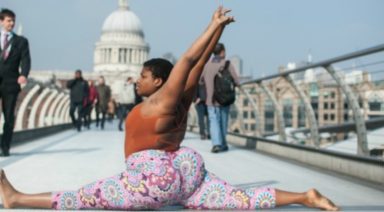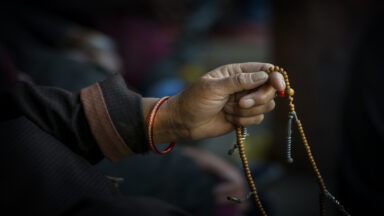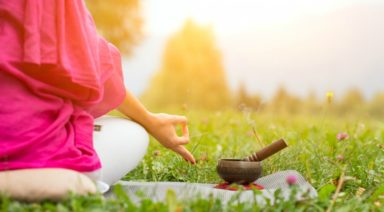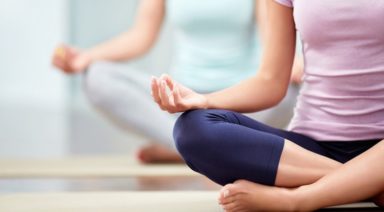5 Tips for a Healthy Thyroid

Do you know about the little butterfly inside of you? Not the one in your stomach that flutters when you are nervous. The one in the middle of your neck; the one that doesn’t get much attention until the doctor puts his/her cold hands around your neck and pokes around. It is called the Thyroid Gland — actually shaped like a butterfly — in front of your throat, underneath your Adam’s apple (yes ladies, you have one too, just smaller).
Let’s get to know the what this tiny gland does. It’s time to get comfortable with the butterflies.
The hormone secreted from this gland is responsible for metabolism, energy, growth and balance of other sex hormones. In yoga, it is associated with the fifth chakra that lies in the same region — the visshudhi chakra — represented by space, sound & the colour blue. In psychology, tightness in this region is associated with feeling unheard, or holding in the unspoken.
The thyroid gland releases a hormone called T4 that turns into T3, which is what is called the physiologically active thyroid hormone. This is not the first hormone measured when a doctor tests your thyroid health.
When we suspect a Hypo (low T4&T3) or Hyper (high T4&T3) thyroid state, the first hormone tested is the Thyroid Stimulating Hormone (TSH), which comes from the pituitary gland in the middle of your brain, not the thyroid. Confusing, huh?
Think of TSH like a distant gatekeeper. If you have enough thyroid hormone doing its job in your body, TSH stays in a normal range. There are autoimmune conditions and other thyroid troubles where the TSH & thyroid hormone are affected by other factors, but for the vast majority of the population, there are two scenarios that are most likely:
Scenario 1
You don’t have enough thyroid hormone to manage metabolism, energy, and growth, causing weight gain, hair loss, dry skin, depression/anxiety—what I call the “slow symptoms”. TSH increases to try and get your thyroid to pump out more hormone because you have Hypothyroid (your TSH has risen when your doctor assesses that you have low thyroid function).
Scenario 2
You have too much Thyroid hormone, causing rapid weight loss, heart palpitations, depression/anxiety—what I call the “fast symptoms”. This can be dangerous! TSH lowers and tries to stop the Thyroid gland from releasing its hormone because you have Hyperthyroid (your has TSH dropped when your doctor assesses that you have an overactive thyroid)
So we check in with the gatekeeper first; we ask TSH to give us the low down on the body’s metabolic state. Usually the direction of TSH is the opposite of Thyroid function. The gatekeeper is trying to balance out T4 & T3 levels.
If these numbers are out of whack, it is important to have a physician help you manage your glandular health.
The thyroid gland does not just lie dormant — it changes with our age, our health, our life situations. It responds to our stress levels, exercise and eating habits. We can heal or harm ourselves with simple changes. With a focused diet, meditation and asana practice, and consultation with a physician, you can choose to heal.
There is no magic elixir that can cure all types of thyroid troubles, but there are simple, at-home practices that can certainly help.
5 Thyroid DIY Tips:
- Eat from the sea: Seaweed is a natural source of Iodine, an important component of the thyroid hormone (The T represents how many iodine molecules are in the hormone). Iodized salt was created to protect non-coastal peoples from thyroid goiters. Cod and halibut are excellent sources of Tryptophan; tryptophan deficiency has been associated with hyperthyroid states. These fish are also high in selenium.
- Eat from the earth: Respect the neglected button mushrooms – one of the best natural sources of Selenium, a crucial mineral in the conversion of T4 to T3 (the active hormone).
- Use the air in your lungs: Sing/Om/Hum—Get some blood flow back into your throat. Let your voice be heard. Let the butterflies fly.
- Sit: A daily meditation practice has been shown to lower cortisol levels, another hormone in cahoots with the thyroid. Frequency of this practice is more important than duration. Sitting can kill you, but sitting can heal you.
- Move your body: Practice these asanas regularly, with proper alignment guidance:
Matsyasana (Fish Pose)
Purvottanasana (Table)
Salamba Sarvangasana (Shoulderstand)
Baddha Konasana (Butterfly)
Balasana (Child’s Pose)
The poses that assist the thyroid are associated with the sea and the butterfly. Now, that’s full circle health.
Complete Guide to Mudras and Their Meanings

Mudras are symbolic gestures performed primarily with the hands and act as tools to channel the body’s energy. These specific positions have a direct effect on the physical, mental, and spiritual state, and have been used for centuries in practices such as yoga, meditation, and energy healing. In this article, we explore what mudras are, how they are applied, and the meaning behind some of the most powerful ones.
Table of Contents
- What Are Mudras and What Are They For?
- In What Practices Are Mudras Used?
- The Most Powerful Mudras and Their Meanings
- Prana Mudra, the Mudra of Vital Energy
- Gyan Mudra, the Mudra of Wisdom and Knowledge
- Surya Mudra, the Mudra of the Fire Element
- Uttarabodhi Mudra, the Mudra of Spiritual Transformation
- Vayu Mudra, the Mudra of the Air Element
- Shambhala Shield, the Mudra of Protection and Strength
- Shunya Mudra, the Mudra of Emptiness and Pacification
- Apan Mudra, the Mudra of Purification and Elimination
- Prithvi Mudra, the Mudra of Stability and Balance
- Benefits of Practicing Mudras with the Hands
- Are Mudras Only Performed with the Hands?
- History of Mudras: What Is Their Origin?
What Are Mudras and What Are They For?
Mudras are energetic gestures that have been practiced since ancient times in traditions such as Hinduism and Buddhism. Their main purpose is to redirect the flow of vital energy (prana) within the body, helping to restore internal balance and enhance different states of consciousness. Although they are most commonly practiced with the hands, there are also full-body mudras that incorporate specific postures and movements.
From a physical perspective, mudras stimulate energetic points that connect with the nervous system’s channels and with the vital organs. When a mudra is maintained for several minutes, it activates an energetic circuit that can influence health, concentration, mental calm, or energy levels. This activation can be useful for relieving symptoms, releasing tension, or improving focus during meditation.
On an emotional and spiritual level, mudras function as symbolic keys that allow one to access deep mental states and facilitate personal transformation processes. Some mudras support introspection, while others awaken qualities such as confidence, wisdom, or determination. Their effects are not immediate, but with consistent practice, their benefits become increasingly evident.
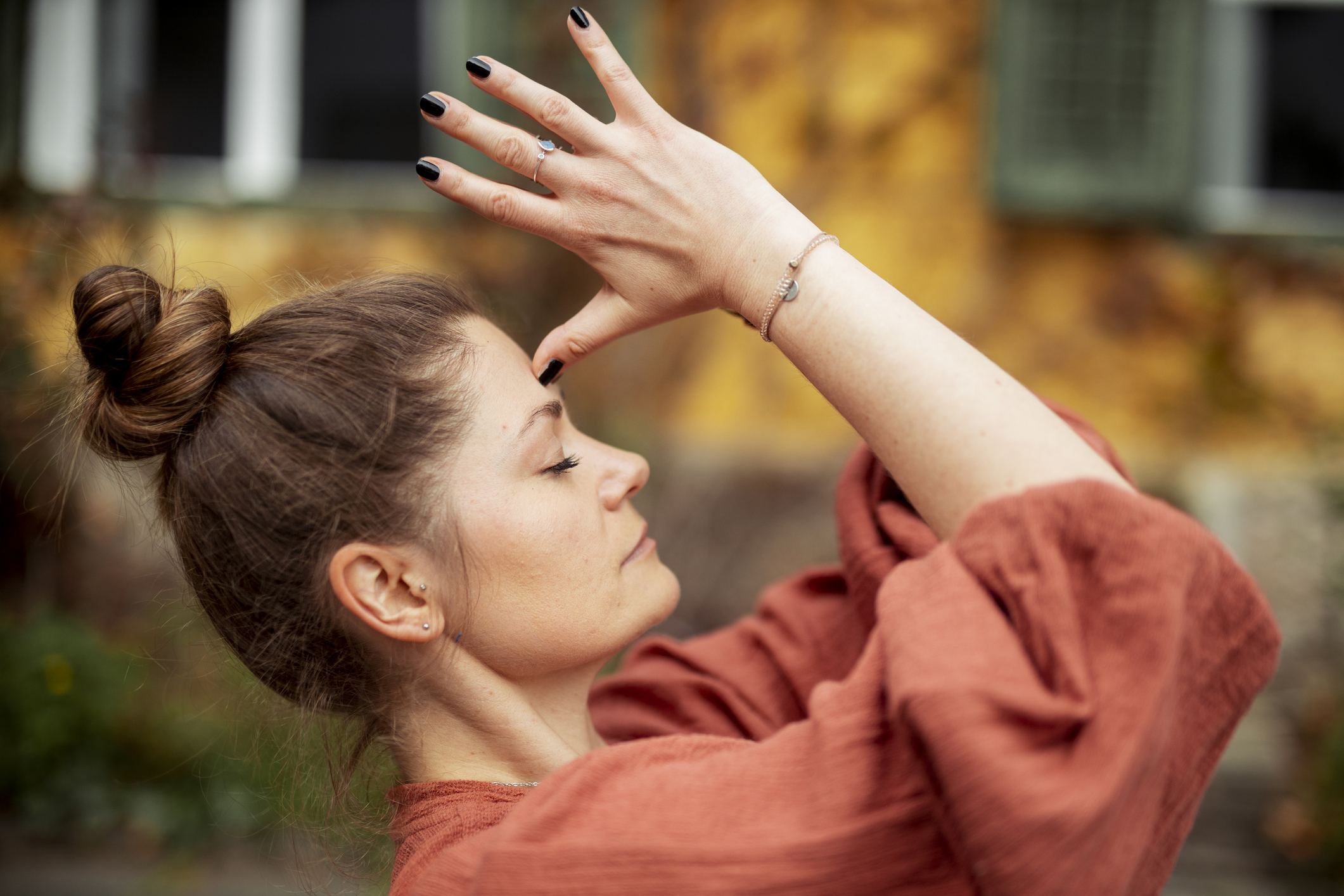
In What Practices Are Mudras Used?
Mudras are naturally integrated into various spiritual and therapeutic disciplines, such as yoga, meditation, pranayama, and some forms of ritual dance. They are also present in religious ceremonies of Hinduism, Buddhism, and Taoism, where they are used as symbols of devotion, divine connection, and spiritual protection. Today, they are widely employed in contemporary wellness practices due to their simplicity and effectiveness.
Mudras in Yoga
In the context of yoga, mudras are an extension of the energetic practice. They accompany both physical postures (asanas) and breathing exercises (pranayama), acting as catalysts that intensify the effects of each technique. By incorporating a mudra into the practice, the channeling of prana to specific areas of the body is facilitated, and greater coherence is created between intention, breath, and movement.
Beyond the energetic component, mudras in yoga also bring a meditative focus. Each gesture has a particular symbolism that invites introspection and full presence. In this way, the practitioner not only strengthens their physical body but also trains the mind to remain in balance and connected to its spiritual dimension.
Mudras for Meditation
In meditation, mudras are used as a pathway to stabilize the mind and deepen concentration. By adopting a specific mudra, a neurophysiological response is activated that can induce calm, clarity, or emotional openness, depending on the type of gesture. This practice helps reduce mental scattering and sustain a meditative state for longer periods.
In addition to the effect on the mental state, mudras in meditation allow for working with clear intentions: from cultivating compassion to stimulating intuition or strengthening inner will. Each mudra acts as a symbolic channel that connects the practitioner’s intention with their subtle energy, offering a silent but powerful support for inner work.

The Most Powerful Mudras and Their Meanings
There are dozens of mudras, but some stand out for their ability to activate essential qualities such as vital energy, wisdom, inner balance, or spiritual transformation. These gestures have practical applications in everyday life and can be used to enhance well-being, deepen meditation, or accompany personal processes of healing and growth.
Prana Mudra, the Mudra of Vital Energy
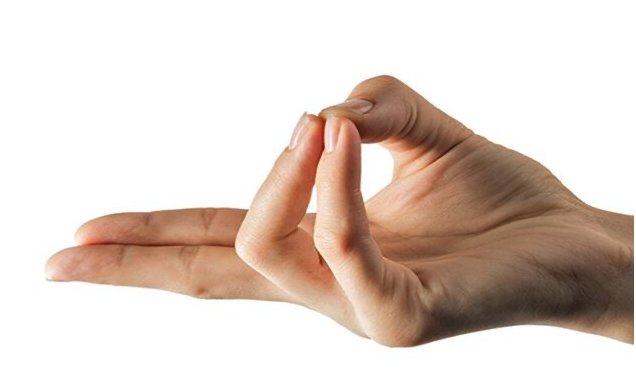
Prana Mudra is related to the awakening and the distribution of vital energy in the body. Its practice is especially useful in moments of fatigue, exhaustion, or lack of motivation, as it stimulates the flow of prana and strengthens the immune system. It is a recommended mudra for revitalizing oneself, both physically and mentally.
It can also support emotional balance, as it mobilizes stagnant energy and helps to unblock internal areas where tension accumulates. That is why it is a powerful tool for those who need to regain inner strength, clarity, and dynamism in their daily life.
Gyan Mudra, the Mudra of Wisdom and Knowledge
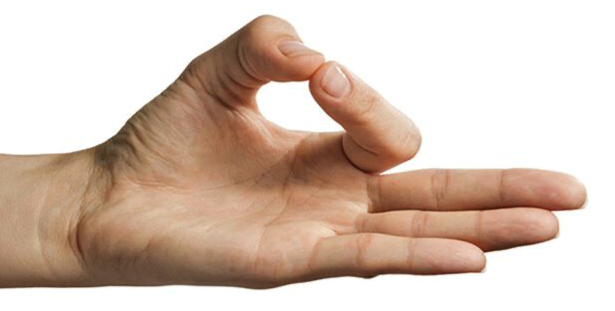
Gyan Mudra is one of the most commonly used in meditation and yoga due to its effect on the mind. It is associated with the activation of knowledge, concentration, and clear perception. Regular practice helps to calm mental activity and facilitate states of deep focus.
In addition to its cognitive effect, this mudra has a spiritual dimension. By stimulating the connection with inner knowledge, it becomes a tool for personal growth, conscious learning, and the awakening of intuition.
Surya Mudra, the Mudra of the Fire Element
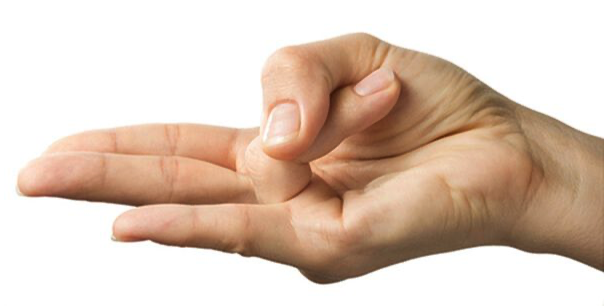
Surya Mudra activates the inner fire, represented in the body by digestion, metabolism, and transformative energy. It is an effective mudra to stimulate vitality, improve digestion, and support the elimination of toxins. It can also be useful in practices focused on purification and the release of what is no longer needed.
On a subtler level, the fire element is also related to willpower, courage, and determination. That is why this mudra can strengthen confidence and motivate concrete actions in moments when decisions must be made or changes initiated.
Uttarabodhi Mudra, the Mudra of Spiritual Transformation

Uttarabodhi Mudra is linked to spiritual awakening and the opening to new forms of understanding. It is a gesture associated with states of inner clarity, renewed purpose, and deep connection with higher consciousness. It is used in advanced meditation practices or during moments of inner change.
This mudra not only represents enlightenment but also the strength necessary to go through transformation processes. When adopted, it enhances the ability to let go of old mental and emotional structures, facilitating a conscious evolution toward a more authentic version of oneself.
Vayu Mudra, the Mudra of the Air Element
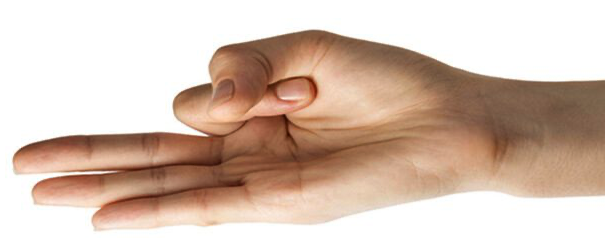
Vayu Mudra is designed to balance the air element within the body, which is associated with movement, circulation, and mental activity. It is especially useful for calming anxiety, reducing restlessness, and relieving physical tension related to the nervous system. It can also help in cases of joint pain, tremors, or muscular stiffness.
This mudra helps stabilize excessive thoughts and promotes a sense of inner lightness. It is a practical tool for those seeking mental clarity and greater control over emotional or mental impulses.
Shambhala Shield, the Mudra of Protection and Strength
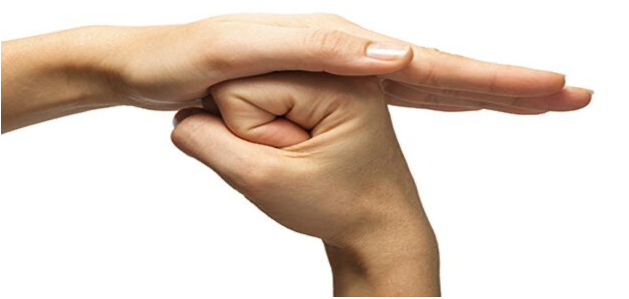
The Shambhala Shield is considered a mudra of energetic defense and inner strength. Its practice creates a feeling of containment and safety, acting as a barrier against negative external influences. It is especially helpful during times of vulnerability or in emotionally charged environments.
This mudra is also related to personal power and confidence. When activated, it strengthens the energy field and cultivates an attitude of firm and serene presence, ideal for facing challenges or upholding healthy boundaries.
Shunya Mudra, the Mudra of Emptiness and Pacification

Shunya Mudra acts on the energy channel linked to the sense of hearing and inner space, helping to calm mental activity and reduce sensory overload. It is frequently used to relieve auditory discomforts, such as ringing or pressure in the ears, and also in cases of imbalance or mild dizziness.
Beyond its physical benefits, this mudra promotes a sense of inner silence and expanded presence. It is a suitable tool for deep introspective practices or for moments when one needs to clear mental and emotional noise.
Apan Mudra, the Mudra of Purification and Elimination

Apan Mudra stimulates the processes of elimination in the body, both physically and energetically. It is believed to support detoxification, digestion, and the regulation of the excretory system. It may also promote emotional release and deep rest.
From a broader perspective, this mudra represents the ability to let go of what is no longer necessary. It is a powerful practice for those going through phases of inner cleansing, closure of cycles, or a need for renewal.
Prithvi Mudra, the Mudra of Stability and Balance
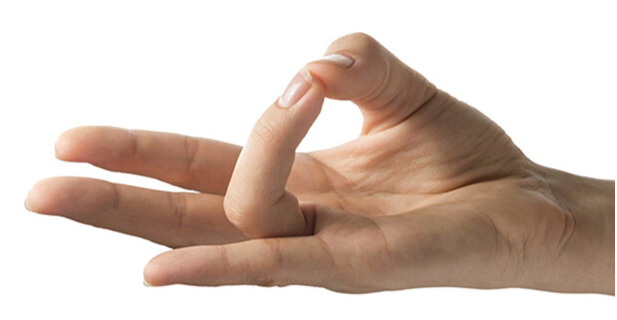
Prithvi Mudra activates the earth element in the body, promoting stability, vitality, and grounding. It is recommended in times of fatigue, insecurity, or dispersion, as it helps to restore physical and mental balance. It is also useful for strengthening nails, skin, and hair.
This mudra enhances the connection with the tangible and with the basic vital force. It can be used to cultivate a stable sense of presence, especially when one needs to regain calm or anchor themselves in the present moment.
Benefits of Practicing Mudras with the Hands
Practicing mudras with the hands offers a simple and accessible way to positively influence the body, mind, and emotions. These gestures act on the energetic and nervous systems, helping to restore internal balance and enhance different qualities depending on the mudra being used.
- Improve concentration: They stimulate areas of the brain related to attention. They facilitate focus in meditation and in activities that require mental clarity.
- Reduce stress: They activate the parasympathetic system and promote relaxation. They are effective for calming anxiety and reducing bodily tension.
- Balance vital energy: They help to unblock the body’s energy channels. This allows prana to flow more freely and harmoniously.
- Support emotional health: They aid in managing intense emotions such as fear, sadness, or anger. They help generate more stable internal states.
- Enhance spiritual practice: They strengthen the connection with inner purpose and full awareness. They are important allies in rituals, mantras, and visualizations.
- Relieve physical discomforts: Some mudras are used for headaches, digestive discomfort, or respiratory issues. They act as complementary support in healing processes.
- Increase vitality: They stimulate the immune system and strengthen the body’s overall energy. They are useful during periods of physical or emotional exhaustion.
Are Mudras Only Performed with the Hands?
Although hand mudras are the most well-known and commonly practiced, they are not the only ones. There are also body mudras that involve full-body postures, eye movements, tongue positions, and specific spinal alignments. These broader gestures are used in practices such as kriya yoga, tantra, and certain advanced meditation techniques.
Mudras performed with the whole body can have a deeper and more immersive impact. They integrate the physical, energetic, and mental aspects into a single symbolic action. Their effect tends to be more powerful when combined with conscious breathing, visualization, and clear intention.
History of Mudras: What Is Their Origin?
The use of mudras has very ancient roots that date back to the earliest civilizations of South Asia. In India, their practice is documented in Vedic texts and in the traditions of yoga and Ayurveda. The sages of antiquity considered them subtle tools for directing vital energy and accessing elevated states of consciousness.
Over time, mudras were adopted into Buddhism, especially in Tantric and Tibetan Buddhism. In these traditions, mudras are used in rituals, symbolic representations, and in deity statues. Each gesture has a specific meaning representing divine qualities or aspects of the spiritual path.
Records of mudras are also found in other Asian cultures such as Taoism in China, and in certain artistic and religious expressions in Southeast Asia. In these contexts, mudras were combined with dance, chanting, and meditation, creating complete practices of inner connection and spiritual expression.
Today, mudras have been integrated into modern wellness and personal development disciplines around the world. Their simplicity, along with their effectiveness, makes them an accessible tool for anyone interested in balancing their energy, cultivating mindfulness, or deepening their spiritual practice.




